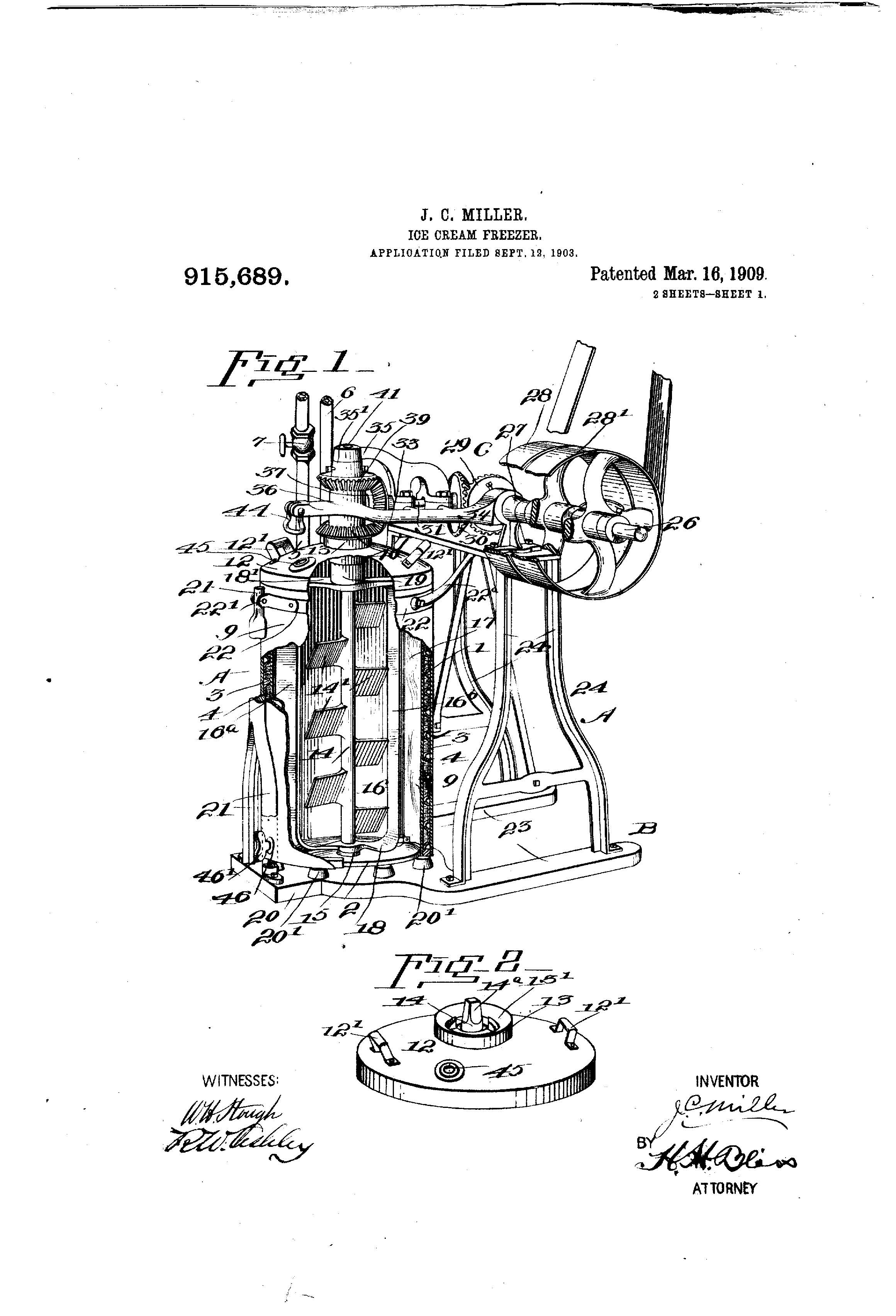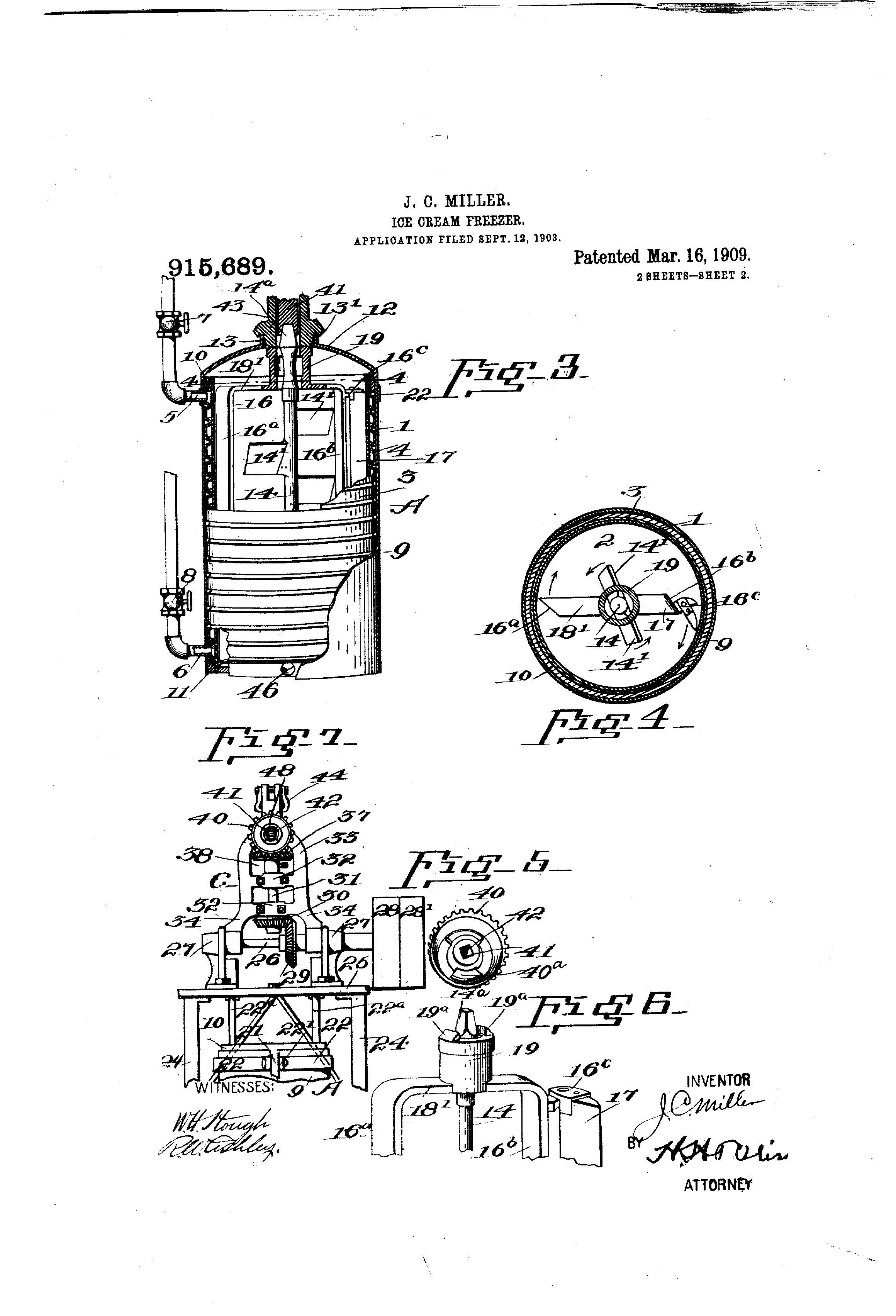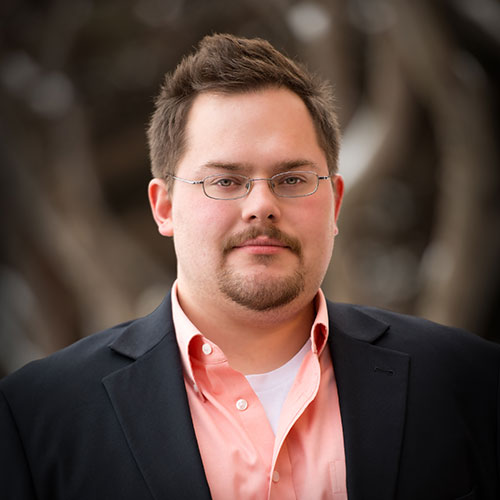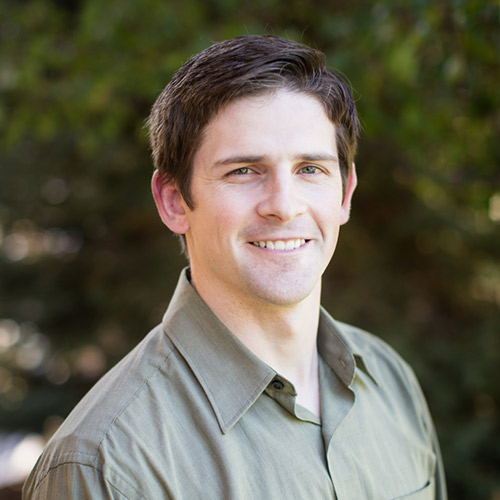Patent of the Day: Manufacture of Artificial Teeth or the Like
Suiter Swantz IP takes a look back at past inventions and inventors with our Patent Of The Day.
On this day in 1905, Frédéric Adolphe Jules Cournand was granted U.S. Patent No. 785,715 for a MANUFACTURE OF ARTIFICIAL TEETH OR THE LIKE.
This invention has for its object applications to the dental art - that is to say, to the manufacture of artificial teeth having a fastening wire or rod composed of an alloy of iron and nickel capable of being incorporated in glass or porcelain without fracturing it.
It has not hitherto been found possible to incorporate with perfect adherence in glass or porcelain by means of a fusion or simply by softening the ceramic material metals other than platinum or certain special alloys having a base of iron and of nickel. Experiments have proved that the application of such alloys may be considerably extended and in particular the incorporation of them in porcelain for the manufacture, of artificial teeth.
It is well known that artificial teeth are constituted by molded pieces of hard porcelain in which one or more platinum wires are ordinarily incorporated, which enable them to be fixed either upon artificial palates or in the root of the natural teeth, and which the dentist cuts or saws in such a manner that they come flush with the gums or in any other manner. All metals other than platinum present difficulties in manufacturing arising either from the fact that the melting-point of these metals is too high or because their expansion is greater than that of porcelain, so that after the contraction or cooling of the metal there remains a vacant space between the metal and the material of which the tooth is composed, whereby fracture of the metal pin or rod is frequently caused. It is true that it has been found possible to overcome this difficulty to some extent by fixing by means of baking one or more small rings of platinum, each of which occupies the bottom of a hole in which is engaged a metal pin which is fixed by means of the metallic soldering to the platinum ring. The pin remains free in the passage, and it is connected to the tooth only by the extremity soldered to the inner platinum ring. A pin thus fixed to a platinum ring adapted to the bottom of the hole does not, however, present the necessary fixity or strength. The tooth or the like which forms the subject of this invention gives better results and has incorporated in it a metal other than platinum, this metal having practically the same coefficient of expansion as porcelain. The metal employed is an alloy of iron and nickel, the proportion of nickel varying between forty and fifty per cent, in accordance with the expansibility of the porcelain with which it is to be combined. This alloy is not necessarily constituted by pure iron and nickel. It is an industrial and metallurgical alloy adapted to contain small quantities of foreign metals, such as chromium, manganese, cobalt, tungsten, or metalloids such as silicium or carbon. These wires may be incorporated directly in readily-fusible porcelains. If, however, the teeth are constituted by hard porcelain, wires composed of the alloys the composition of which has been indicated above would be deteriorated during baking. In order to arrange and fix them in the porcelain, the following or any other suitable methods may be therefore employed. One method consists in covering the wire of alloy of iron and nickel with a very thin tube of platinum, which is drawn with it and is perfectly adherent. This composite wire being engaged in the porcelain tooth, this latter may be baked in the ordinary manner and under the same conditions as if the wire were wholly of platinum, without the core of wire in iron and nickel alloy being deteriorated by the high temperature. In accordance with another method the teeth baked separately are provided with as many cavities as they are to contain wires. The wires of the improved alloy are then placed in these cavities and fixed by means of a suitable enamel or composition, which is fused and which adheres both to the metal wire and to the porcelain. During this operation of fusing the enamel it is well to protect the outer wire by a sheath of glass, porcelain, enamel, or other substance capable of preventing oxidation of the alloy. This sheath or coating is removed subsequently from that portion of the wire which is external to the tooth, baring the iron and nickel alloy wire to where it comes flush with the tooth.
These same alloys of iron and nickel may be employed for the manufacture of the plates employed in the dental art and which are intended to be covered with enamel and serve as false palates or as supports for artificial teeth in the same conditions as false palates of gold, platinum, gutta-percha, or the like.
The invention includes teeth having either a single wire or a plurality of wires.
Suiter Swantz IP is a full-service intellectual property law firm serving all of Nebraska, Iowa and South Dakota. If you have any intellectual property questions or need assistance with any patent, trademark or copyright matters and would like to speak to one of our patent attorneys please feel free to contact us.
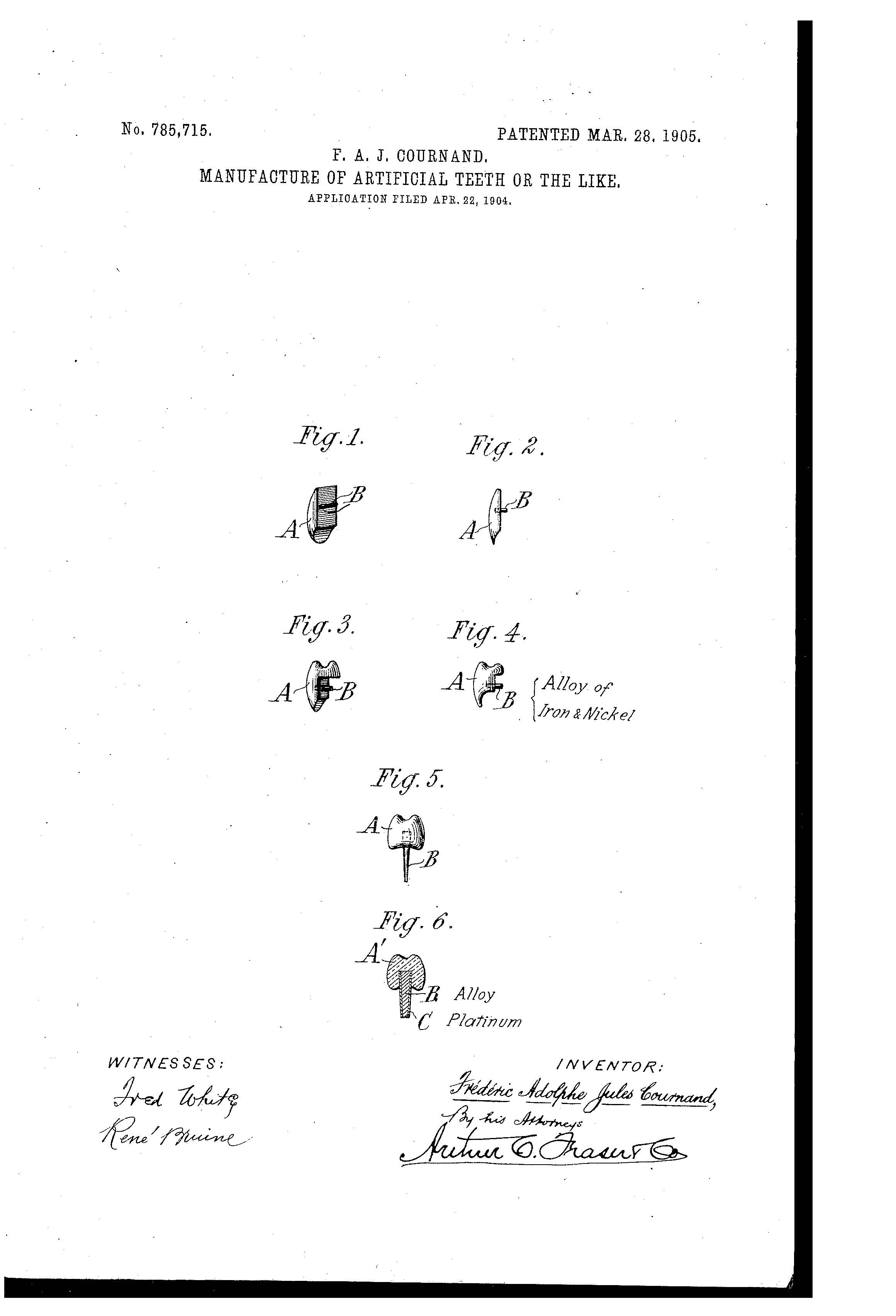
Patent of the Day: Brick Making Machine
Suiter Swantz IP takes a look back at past inventions and inventors with our Patent Of The Day.
On this day in 1906, Charles Walter Pratt was granted U.S. Patent No. 816,374 for a BRICK MAKING MACHINE.
This invention relates to machines for the formation of bricks or blocks for buildings purposes, and has for its principal object to provide a machine of simple construction by which bricks may be manufactured at minimum expenses and in which the article produced will be equal to the ordinary re-pressed brick of commerce.
A further object of this invention is to provide a machine in which the operation of applying a fresh quantity of material to one mold will result in the dishrag of a finished brick from another die or mold.
A still further object of the invention is to provide for the production of bricks uniform size and density by the application of pressure to exactly the same extent from opposite sides of the brick being formed.
Suiter Swantz IP is a full-service intellectual property law firm serving all of Nebraska, Iowa and South Dakota. If you have any intellectual property questions or need assistance with any patent, trademark or copyright matters and would like to speak to one of our patent attorneys please feel free to contact us.
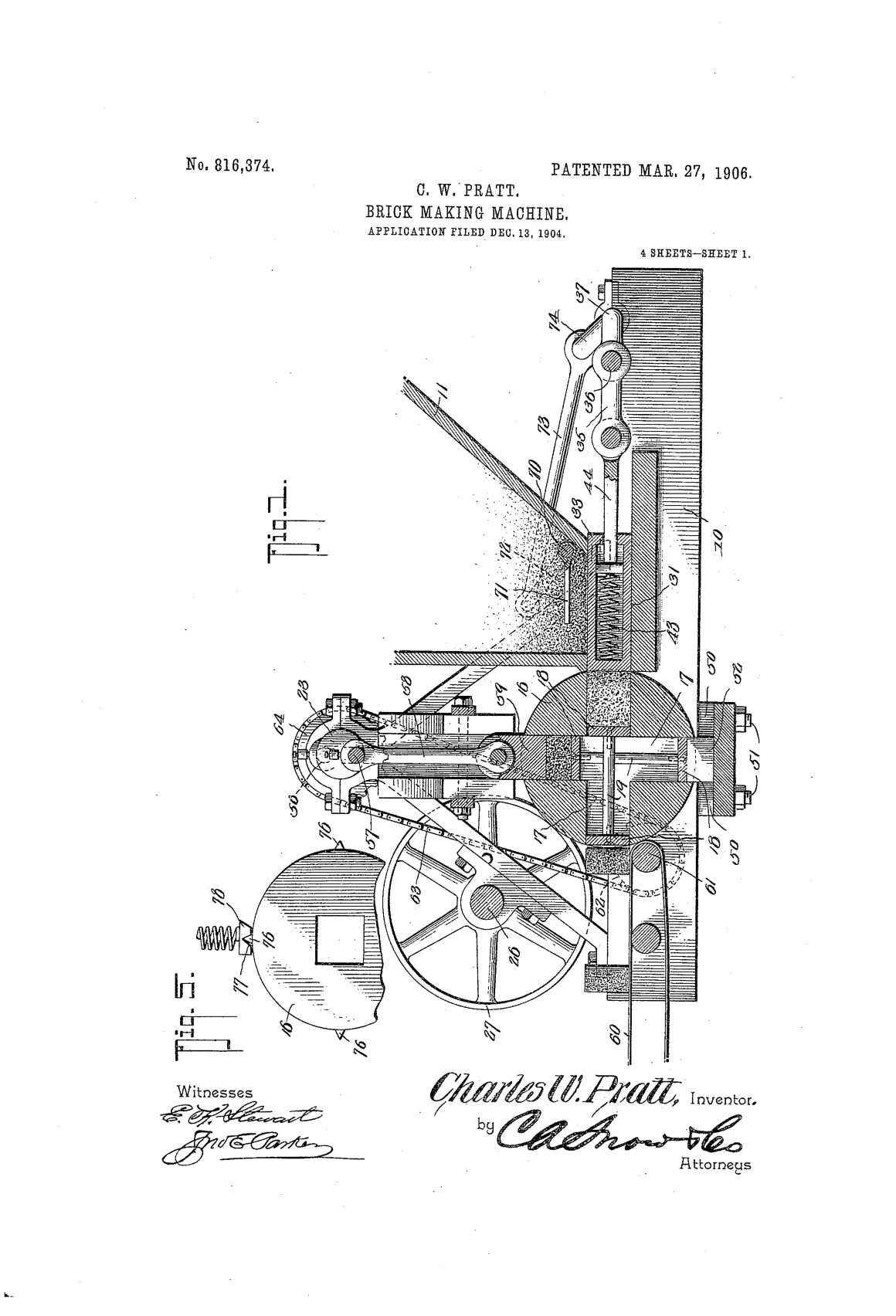
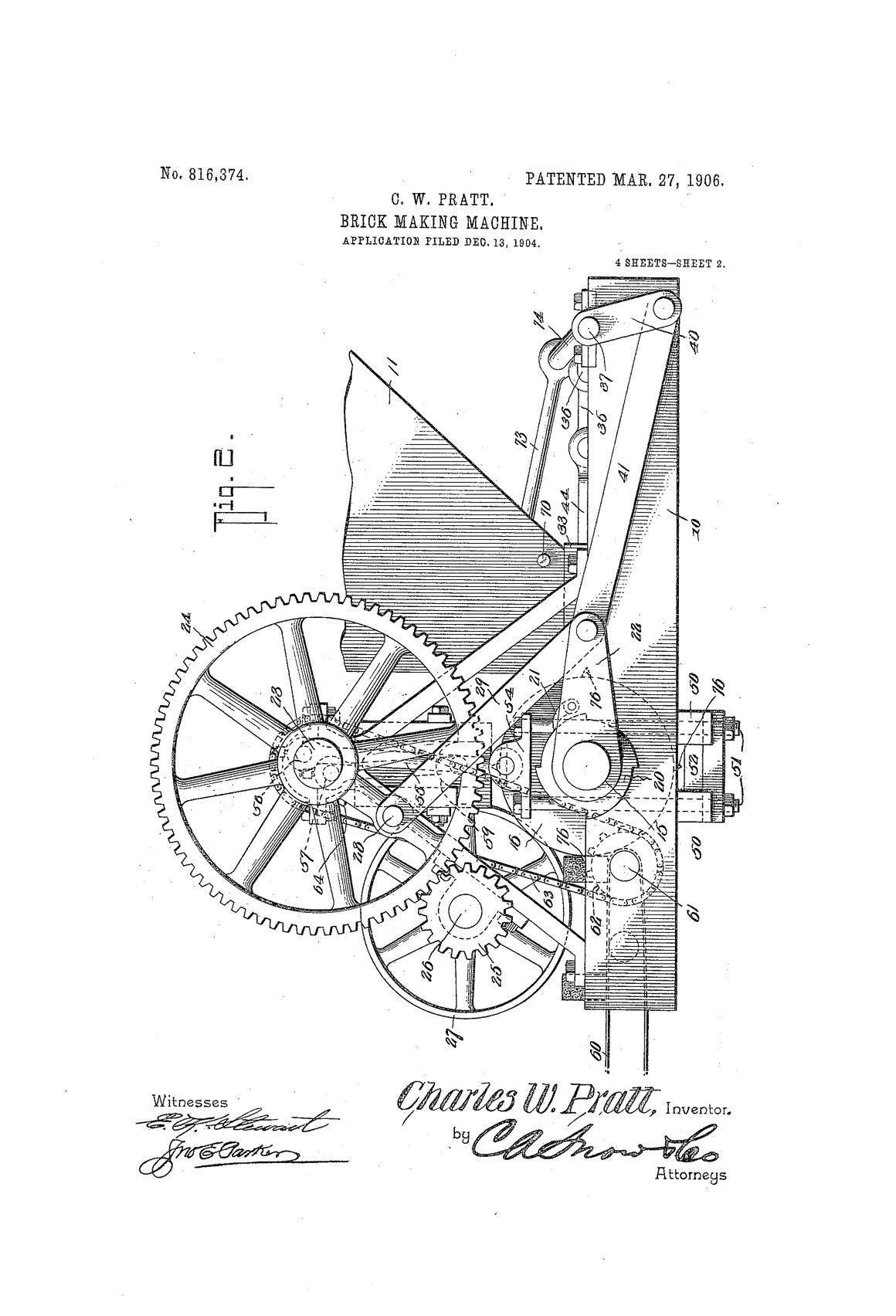
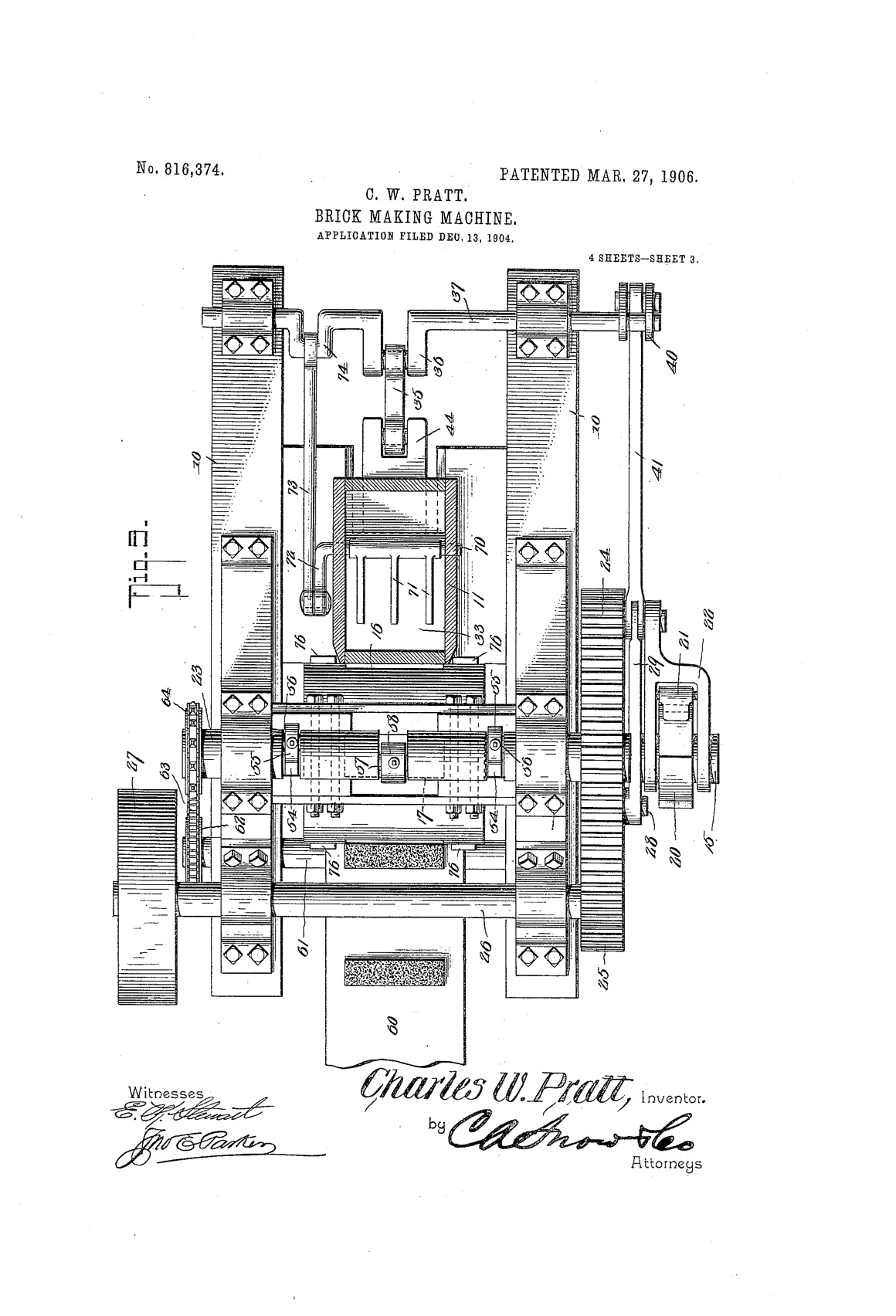
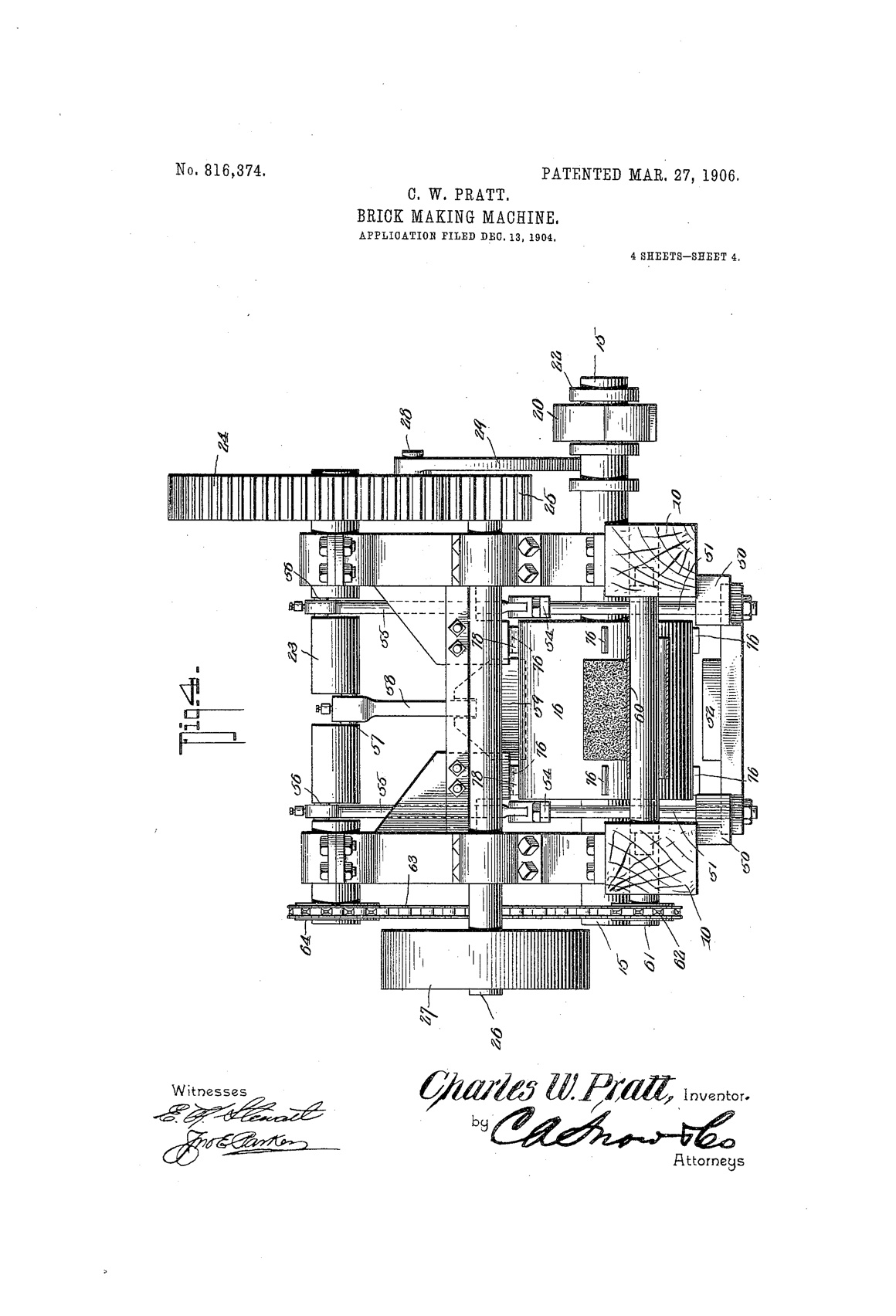
Patent of the Day: Moving Spiral Stairway or Elevator
viagra pop over to this website Suiter Swantz IP takes a look back at past inventions and inventors with our Patent Of The Day.
On this day in 1903, Leamon G. Souder was granted U.S. Patent No. 723,325 for a MOVING SPIRAL STAIRWAY OR ELEVATOR.
This invention has relation to a moving stairway or elevator, and In such connection it relates more particularly to an improvement upon that type of stairway or elevator illustrated and described in Letters Patent No. 625,905, granted to Souder under date of May 30, 1899, the improvement residing in so constructing and arranging the parts of the stairway that the steps may ascend or descend in a spiral, thus forming a moving spiral stairway or elevator.
The principal objects of my present invention are, first, to provide a spiral stairway or elevator wherein the treads and risers constituting the steps of the stairway are flexed at right angles to each other when the steps ascend and descend, and the steps when so flexed travel in a spiral path either in ascending or descending, or both, and said treads and risers flexing into the same plane while changing from an ascending to a descending flight, or vice versa, and, second, to provide in conjunction with such a moving spiral stairway or elevator a landing-block at each floor traveled by the stairway, said block being of peculiar construction and arrangement so that the passenger may readily enter or leave-the steps of the stairway while the stairway is in motion.
Suiter Swantz IP is a full-service intellectual property law firm serving all of Nebraska, Iowa and South Dakota. If you have any intellectual property questions or need assistance with any patent, trademark or copyright matters and would like to speak to one of our patent attorneys please feel free to contact us.
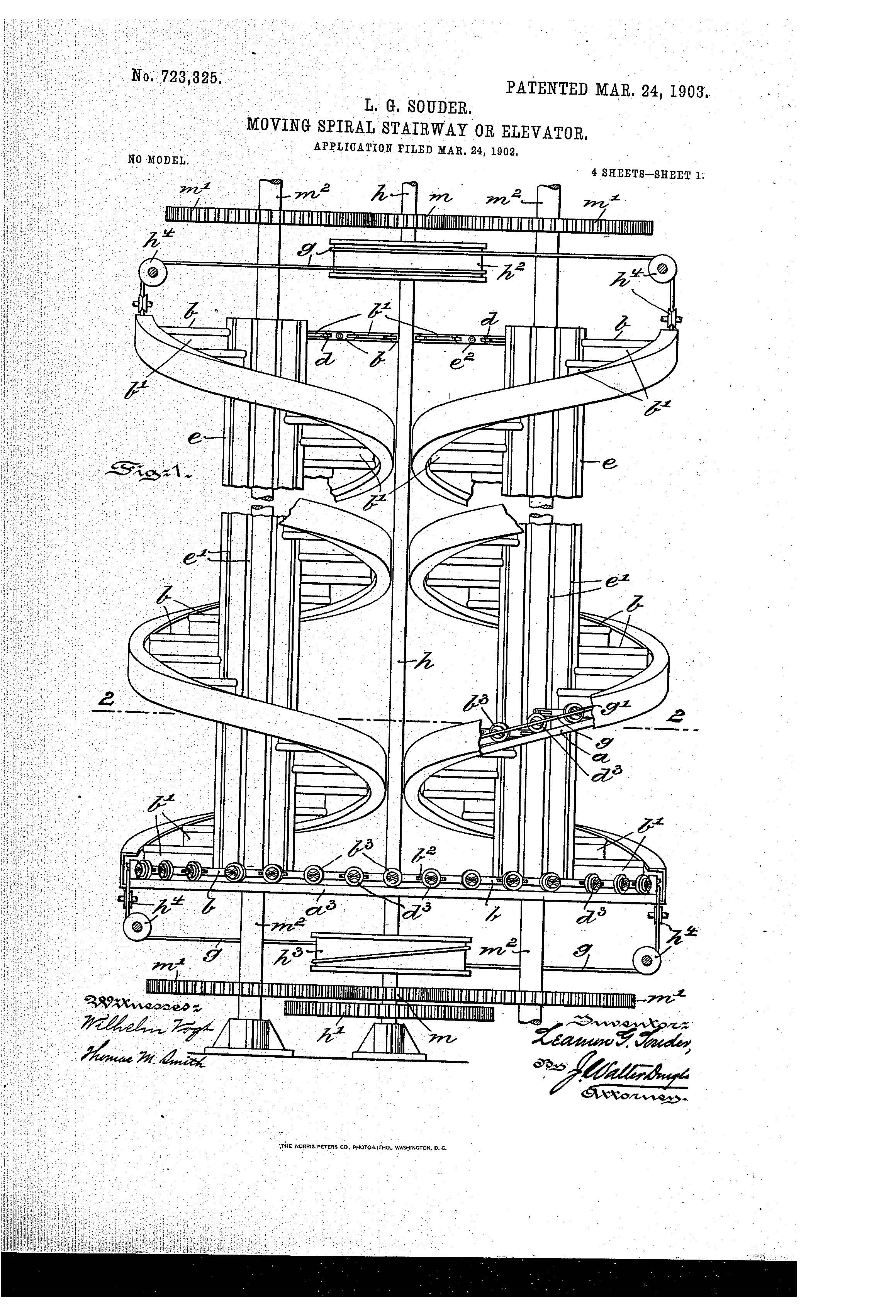

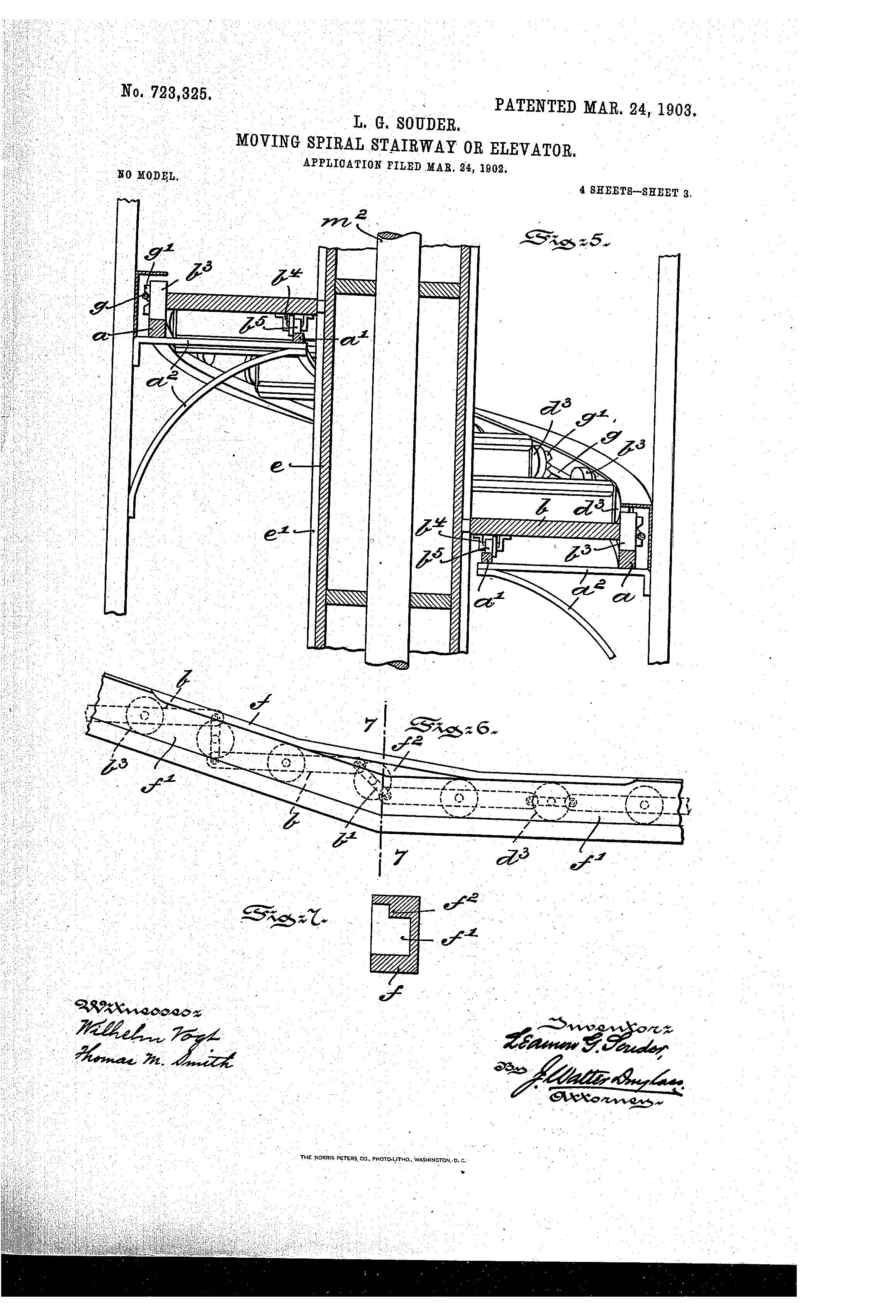
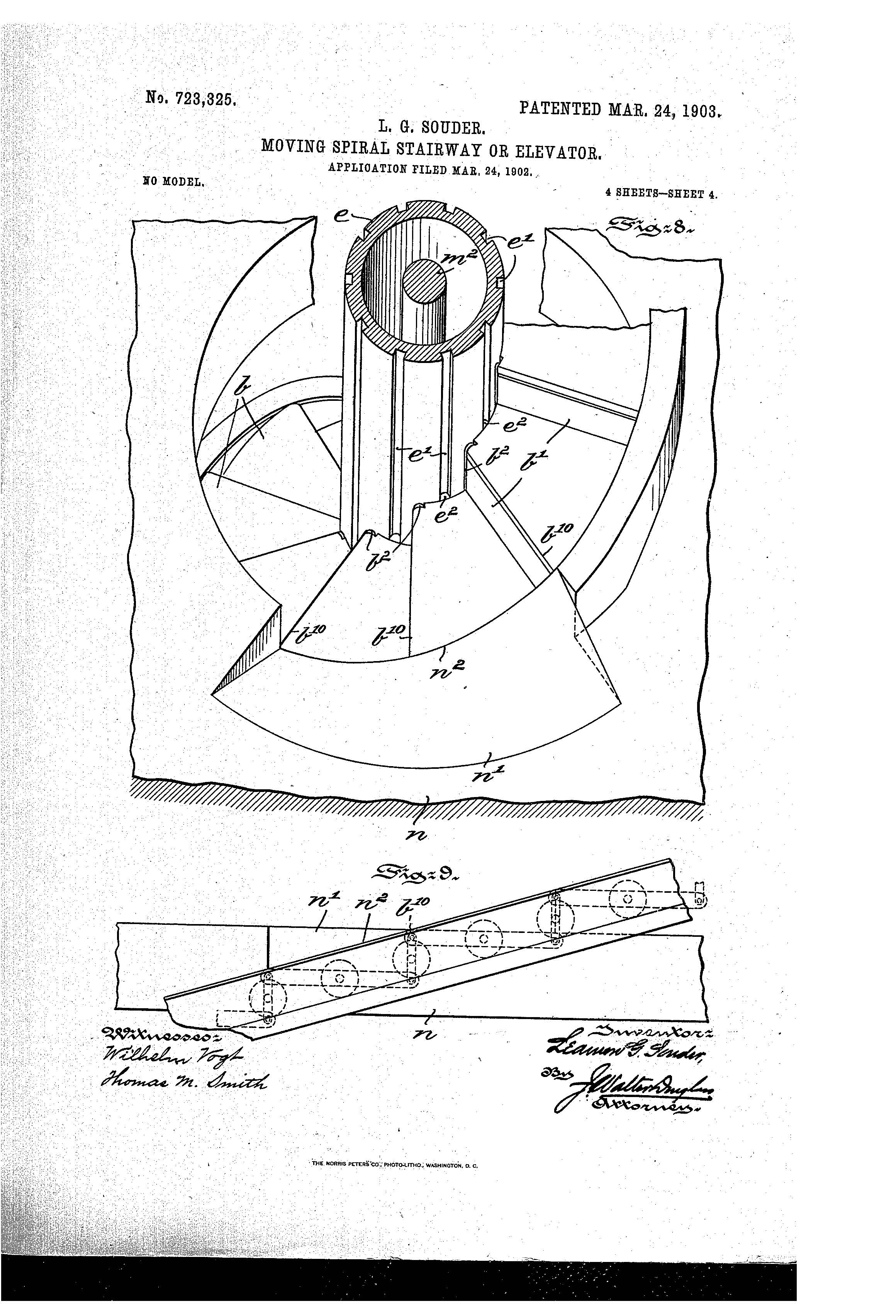
Patent of the Day: Ice Creeper
Suiter Swantz IP takes a look back at past inventions and inventors with our Patent Of The Day.
On this day in 1909, Edward W. Fletcher was granted U.S. Patent No. 915,758 for an ICE CREEPER.
This invention relates to an ice creeper capable of general use for all purposes for which ice creepers ordinarily are employed but especially adapted for the rough usage to which such articles are subjected in the harvesting and loading of ice.
The principal objects of the invention are to provide a light construction of ice creeper which can be secured in a simple and convenient manner to every kind of boot or shoe and which will not depend upon any particular construction of the latter for assisting in holding it in position. Also to provide means whereby the spurs may be removed and replaced; means whereby the same construction can be made to fit shoes or boots of different sizes; and improved means for securing the parts in position.
Suiter Swantz IP is a full-service intellectual property law firm serving all of Nebraska, Iowa and South Dakota. If you have any intellectual property questions or need assistance with any patent, trademark or copyright matters and would like to speak to one of our patent attorneys please feel free to contact us.
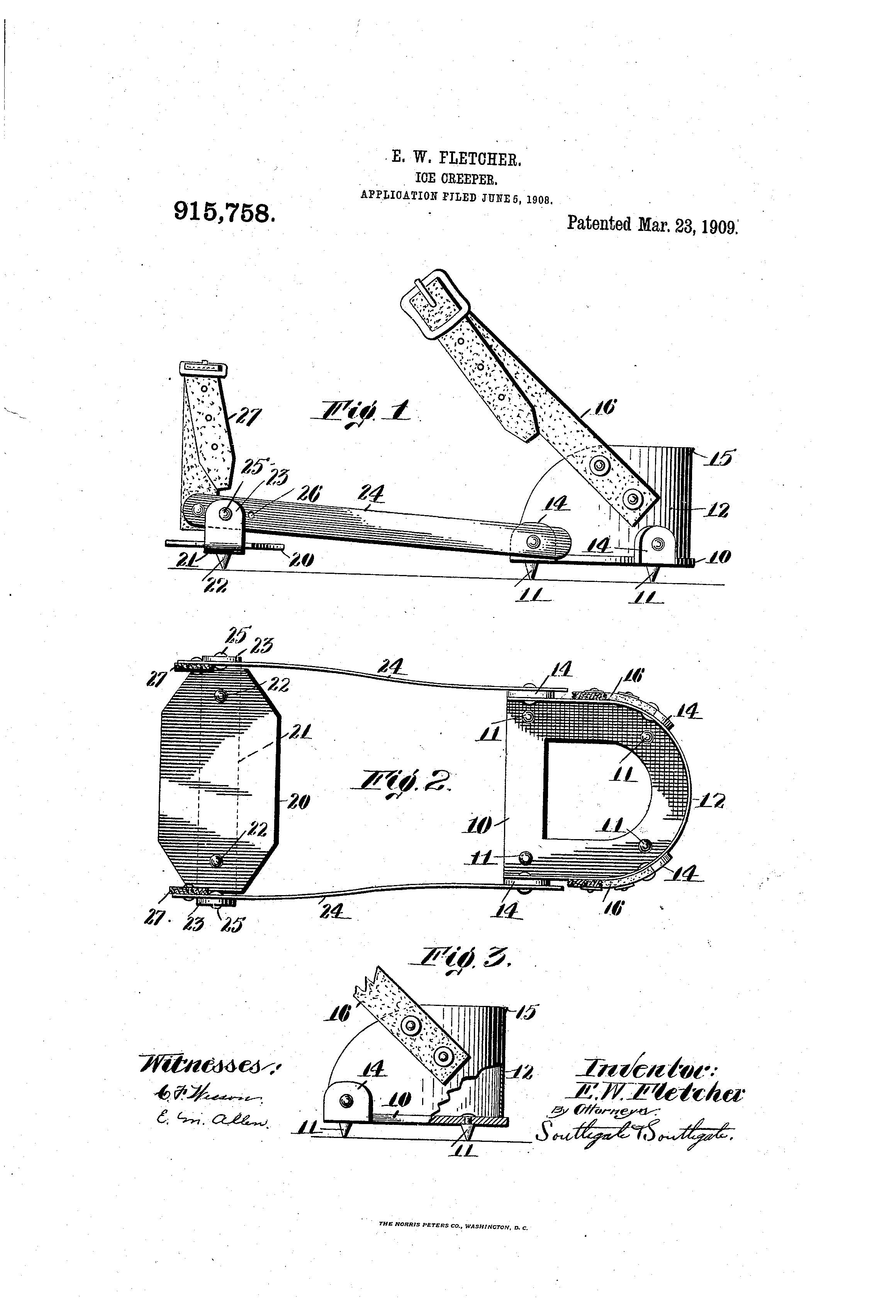
Engineering Outside the Lines
March 24 – Jon S. Horneber will sit on a panel as an alumni of the Mechanical Engineering Department and the Design Center Colorado. Jon will field questions about post-engineering career options in the intellectual property field.
The panel, titled Professional Development Seminar–Engineering Outside the Lines, is held by the Department of Mechanical Engineering at the University of Colorado Boulder, College of Engineering. To learn more about this event, click here.
Patent of the Day: Pocket Cutlery
Suiter Swantz IP takes a look back at past inventions and inventors with our Patent Of The Day.
On this day in 1881, Nelson B. Slayton was granted U.S. Patent No. 239,068 for a POCKET CUTLERY.
This invention relates to a combined knife and fork, the fork and its handle being adapted to fit into a pocket in the knife-handle. The handles of the knife and fork are made by folding a sheet-metal plate back and forth in such a way as to form pockets for the blades, which open alternately at the back and front of the handle. This method of making the handle forms no part of this present invention.
The present invention consists partly in the combination and arrangement of the fork with the knife and partly in the construction of the handle, so as to serve as a spring on the blade, whereby the employment of a back-spring is rendered unnecessary,
Suiter Swantz IP is a full-service intellectual property law firm serving all of Nebraska, Iowa and South Dakota. If you have any intellectual property questions or need assistance with any patent, trademark or copyright matters and would like to speak to one of our patent attorneys please feel free to contact us.
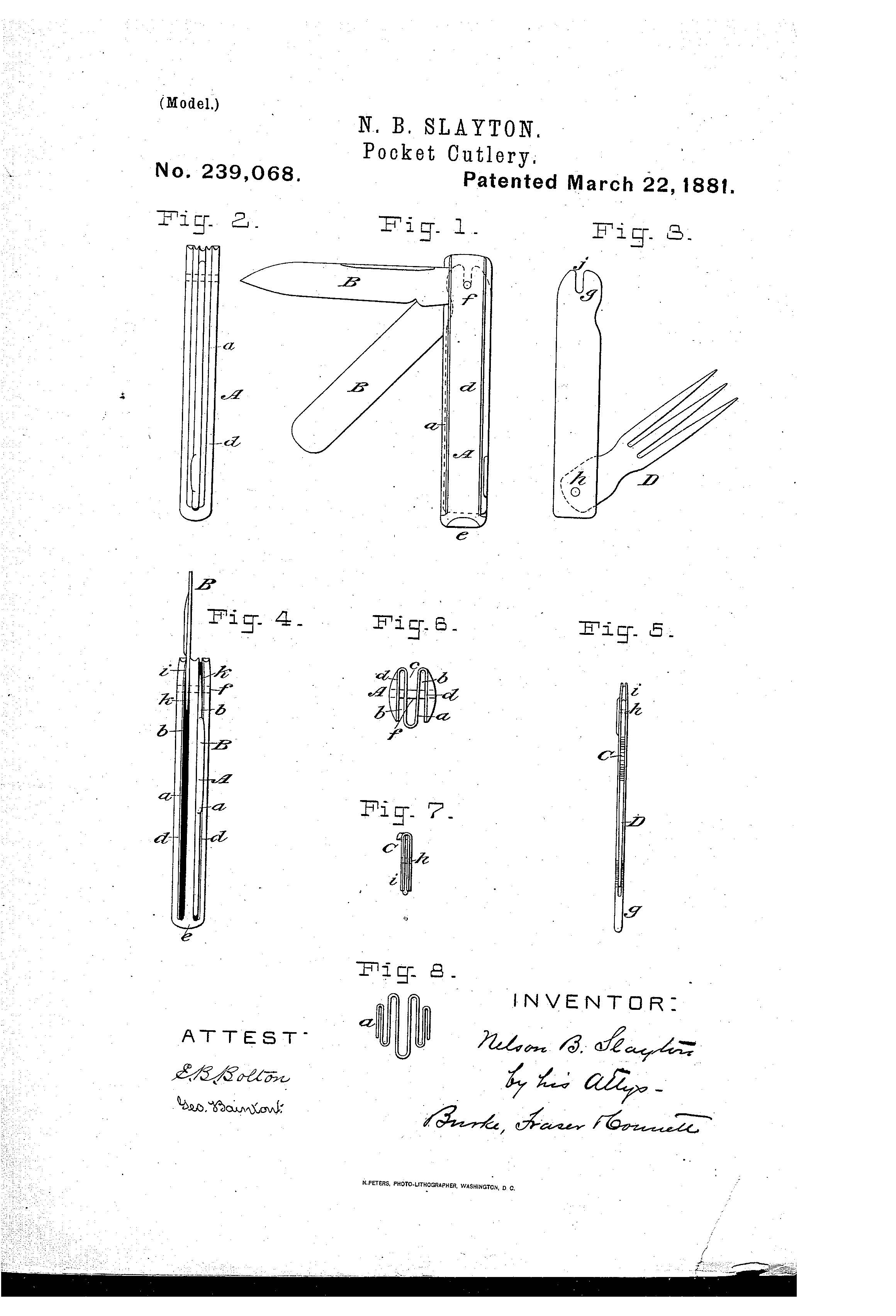
Women’s History Month: A Look at Women Innovators
March is Women’s History Month, and there are many women who have been responsible for countless inventions and innovations. Suiter Swantz IP would like to take this opportunity to showcase the many achievements of a few early women innovators and scientists.
Margaret Knight (1838-1914)
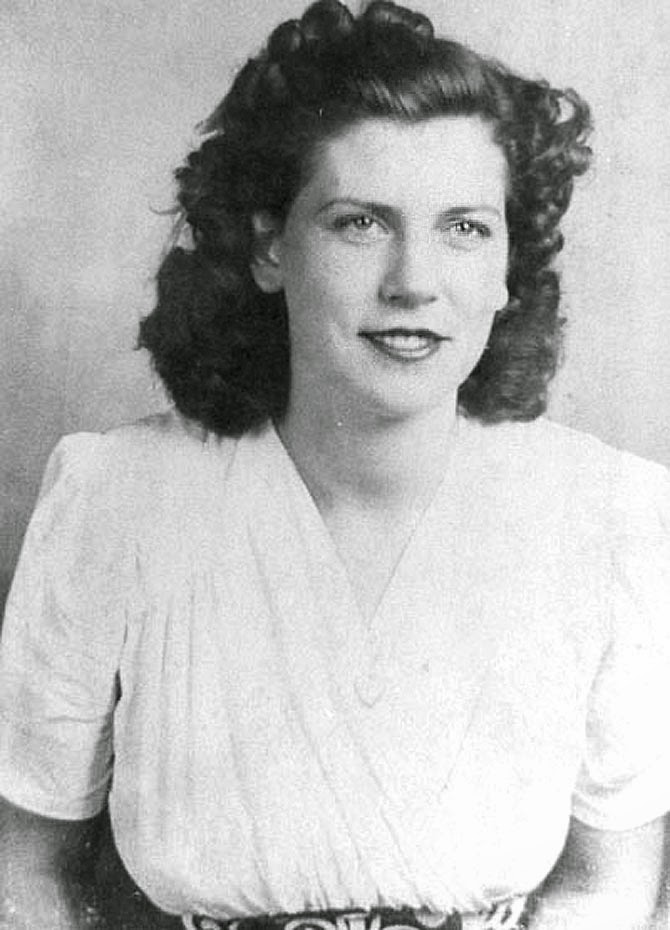 Margaret E. Knight, born in Maine always had an interest in creating things. The traditional toys most girls played with never interested Margaret, and she was labeled a tomboy. Once interviewed she said, “dolls never possessed any charms for me…the only things I wanted were a jack-knife, a gimlet, and pieces of wood.” She was well known in town for her woodworking abilities and was envied by all the boys for the kites and sleds she would make.
Margaret E. Knight, born in Maine always had an interest in creating things. The traditional toys most girls played with never interested Margaret, and she was labeled a tomboy. Once interviewed she said, “dolls never possessed any charms for me…the only things I wanted were a jack-knife, a gimlet, and pieces of wood.” She was well known in town for her woodworking abilities and was envied by all the boys for the kites and sleds she would make.
At a young age (9-10) Knight worked in a cotton mill and it is reported that this is where she made her first invention, although never documented. After seeing another child worker get seriously injured when a steel tipped shuttle fell from a loom, Knight invented a shuttle restraining device to prevent this type of injury from happening again. Knight’s inventions did not stop there.
When Knight was older she left Maine and went to work at Columbia Paper Bag Company in Massachusetts. She became fascinated with the idea of a paper bag with a square bottom and how to mass produce them. Paper bags at that time were shaped like envelopes and did not hold much. If someone requested a paper bag with a square bottom, it was a long arduous process done by hand and near impossible to mass produce. With the concept of mass producing a square bottomed bag in mind, Knight spent months drawing designs and having prototypes made of her most famous invention for which she received a patent, IMPROVEMENT IN PAPER BAG MACHINE (U.S. Patent No. 116,842). This patent almost did not happen for Knight, as Charles F. Annan saw her work and raced her to the Patent Office. Knight sued Annan, and when the two sides met in court, Annan and his attorneys tried to convince the court that Knight was not intelligent enough to create something like this as she was a woman. Fortunately, for Knight many people testified on her behalf, and she received the patent in 1870.
Katharine Burr Blodgett 1898-1979
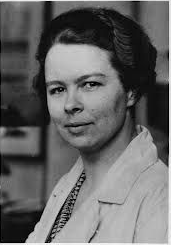 Katharine was born in Schenectady, New York, to George Blodgett and Katharine Burr. Katharine’s father was a well-known patent attorney and head of the patent department at the General Electric Company. Her father was tragically murdered in the family’s home a month before Katharine was born. After her father’s death, Katharine’s mother moved their family to France where Katharine became fluent in French and English.
Katharine was born in Schenectady, New York, to George Blodgett and Katharine Burr. Katharine’s father was a well-known patent attorney and head of the patent department at the General Electric Company. Her father was tragically murdered in the family’s home a month before Katharine was born. After her father’s death, Katharine’s mother moved their family to France where Katharine became fluent in French and English.
Katharine moved back to New York to finish her secondary education at Rayson School where she excelled in math. She graduated high school at the age of 15 and was awarded a scholarship to attend Bryn Mawr College. She graduated second in her class with a degree in physics. Katharine continued to pursue her education receiving a master’s degree from the University of Chicago. While at the University of Chicago, she researched the absorption of gases on charcoal which led her to invent an improvement in gas masks that was used in World War II. Katharine went on to Cambridge University where she worked in the Cavendish Laboratory under Nobel Prize winner Sir Ernest Rutheford. She became the first woman to earn a Ph.D. in physics from Cambridge.
After Cambridge, Katharine went to work at GE, and she was the first woman scientist ever hired. At GE she collaborated with Irving Langmuir, a friend and co-worker of her late father. What started out as improvements in light bulbs transitioned into surface films. Katharine became an expert in this field and invented nonreflecting glass. She coated sheets of glass with 44 one-molecule-thick layers of liquid soap which resulted in invisible glass that neutralized light rays. She further invented a gauge to determine the thickness of the thin films. While other methods could only accurately measure to a few thousandths of an inch, Katharine’s gauge was accurate to one millionth of an inch, this became known as the Langmuir-Blodgett technology. From this invention, she received her first patent “Film Structure and Method of Preparation” (U.S. Patent No. 2,220,860). Five additional patents were also received for this work.
Katharine was honored for her works multiple times and received honorary doctorates of science form Elmira College, Brown University, Western College, and Russell Sage College. She was also awarded the American Chemical Society’s Garvan Metal, the first to be awarded to an industrial scientist. Katharine’s many discoveries and inventions are significant and still used today.
Edith Clarke (1883-1959)
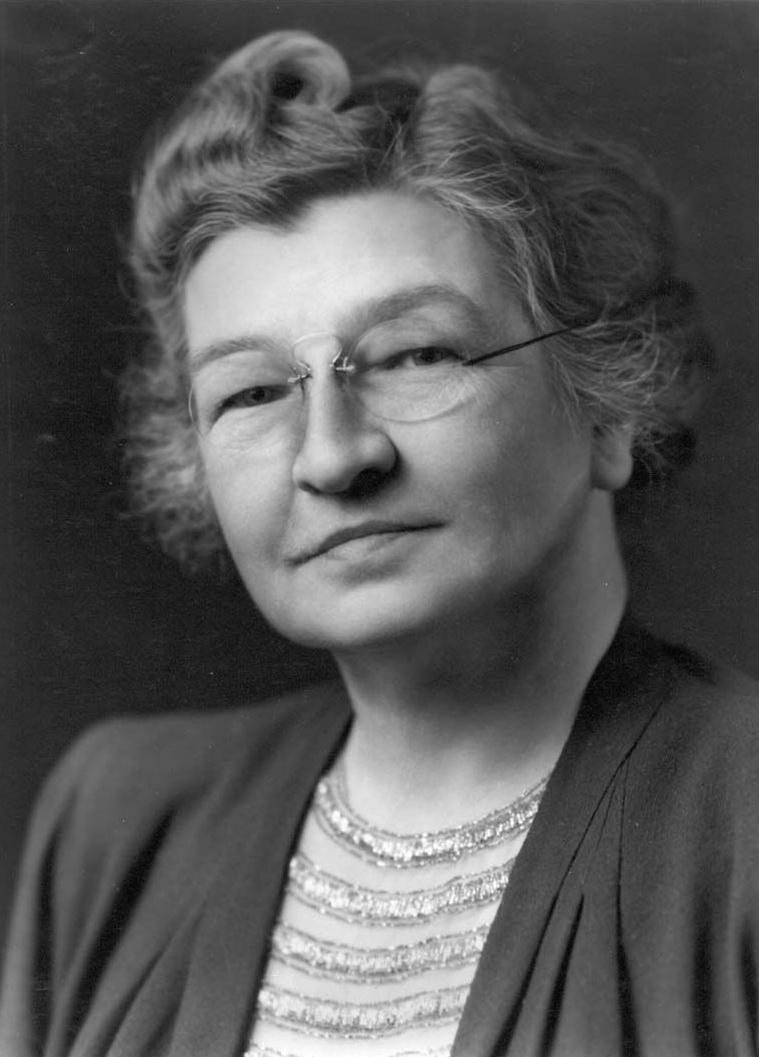 Edith Clarke, one of nine children, was born and raised in Elliot City, Maryland. Her parents both passed away before Edith turned twelve, and as a result, she received an inheritance from them when she turned 18. Edith decided to use that inheritance to go to Vassar College to study mathematics and astronomy. Edith graduated top of her class with Phi Betta Kappa honors. Subsequently, she taught math at a private girls’ school in San Francisco and later at Marshall College in Huntington, West Virginia.
Edith Clarke, one of nine children, was born and raised in Elliot City, Maryland. Her parents both passed away before Edith turned twelve, and as a result, she received an inheritance from them when she turned 18. Edith decided to use that inheritance to go to Vassar College to study mathematics and astronomy. Edith graduated top of her class with Phi Betta Kappa honors. Subsequently, she taught math at a private girls’ school in San Francisco and later at Marshall College in Huntington, West Virginia.
Always wanting to pursue a career in engineering, Edith left her teaching position to enroll in the civil engineering program at the University of Wisconsin. In the summer, Edith took a job working for AT&T as a “computer,” or human calculator, which is a person who solves complex math equations. She enjoyed this work so much that she stayed on full-time but eventually left to enroll in the electrical engineering program at MIT in Boston. She became the first woman at MIT to be awarded a Master’s of Science degree in electrical engineering. Edith used her degree to get a job, again, as a “computer” this time at General Electric (GE). During her time at GE she filed a patent for a graphical CALCULATOR (U.S. Patent No. 1,552,113). This calculator was to be used in the solution of electric power transmission problems.
Edith stayed with GE for 26 years but left to teach electrical engineering at the University of Texas. She became the first woman professor of electrical engineering in the United States and taught until she retired. Dr. James E. Britain wrote a paper about Edith Clarke’s career and said, “[h]er outstanding achievements provided an inspiring example for the next generation of women with aspirations to become career engineers." Some of those achievements led her to be the first woman elected to the American Institute of Electrical Engineers, which is now the Institute of Electrical and Electronic Engineers. She received a lifetime achievement award from the Society of Women Engineers and was noted for her many published works.
Suiter Swantz IP is a full-service intellectual property law firm serving all of Nebraska, Iowa and South Dakota. If you have any intellectual property questions or need assistance with any patent, trademark or copyright matters and would like to speak to one of our patent attorneys please feel free to contact us.
Patent of the Day: Signal Transmission
Suiter Swantz IP takes a look back at past inventions and inventors with our Patent Of The Day.
On this day in 1939, Homer W. Dudley was granted U.S. Patent No. 2,151,091 for a SIGNAL TRANSMISSION.
This invention relates to wave transmission, as for example, signaling.
An object of the invention is to reduce the frequency range required for the transmission of signals, as for instance, speech,
Further, it is an object of the invention to effect such reduction without necessitating increase in the time of transmission.
It is also an object of the invention to facilitate transmission of a message over a transmission medium not adapted to readily pass the frequency band originally occupied by the message, as for example, to facilitate telephoning over long submarine cables where the higher speech frequencies cannot readily be transmitted because of excessive attenuation.
Another object is to facilitate increasing the number of signaling channels that a wave transmission medium, as for example, a land line or a radio circuit, can transmit in a given frequency range.
Another object is to facilitate increasing the signal-to-noise ratio obtainable at the receiving end of a system without increasing the sending level, as for instance, in long distance radio communication where the transmitting power required tends to become excessive.
It is also an object of the invention to promote secrecy in transmission of signals, for instance, in wire or radio transmission of speech.
Objects of the invention are also analysis, synthesis, production, reproduction, reconstruction, simulation, irritation, modification and control of sounds and waves representing sounds, especially speech sounds and vocal effects of usual and unusual character.
The information transmitted by speech doe not absolutely require all the frequency space allotted to it in the human voice. A specific case can be worked out as to how much frequency band is required as a minimum, for example, by determining and taking account of the number of the independent variables or parameters involved in speech production (i. e., the number of the independently movable physical elements of the vocal system that are involved in speech production) and the rate at which these can vary. This is done hereinafter, from which it is estimated that speech from 250 to 7100 cycles can be represented almost perfectly by the information that can be passed in a 500 cycle band or so using the same time of transmission as the speech itself requires.
The well-known rule of conservation of the product of transmitted frequency band width and time of transmission, formulated by Hartley (Transmission of Information-Bell System Technical Journal, July, 1928), which says that to produce a replica of a given piece of transmission information, the frequency band in the transmitting medium can be decreased by any desired factor only when a time of transmission is used that is longer by the same factor, applies to the case when no information as to the signal source at the transmitting end of the system is available at the receiving end or when such information is available but cannot be used in a practical way at the receiving end to reproduce information which is not transmitted over the line. Also this rule is stated for the case of distortionless transmission. Where there is distortion in the transmission medium some types are less objectionable to the ear than other types, phase distortion, for instance, within wide limits being unimportant in telephony. Thus a given frequency band with a certain amount of distortion of one type may transmit intelligence better than a wider frequency band having distortion of a more objectionable type.
Suiter Swantz IP is a full-service intellectual property law firm serving all of Nebraska, Iowa and South Dakota. If you have any intellectual property questions or need assistance with any patent, trademark or copyright matters and would like to speak to one of our patent attorneys please feel free to contact us.

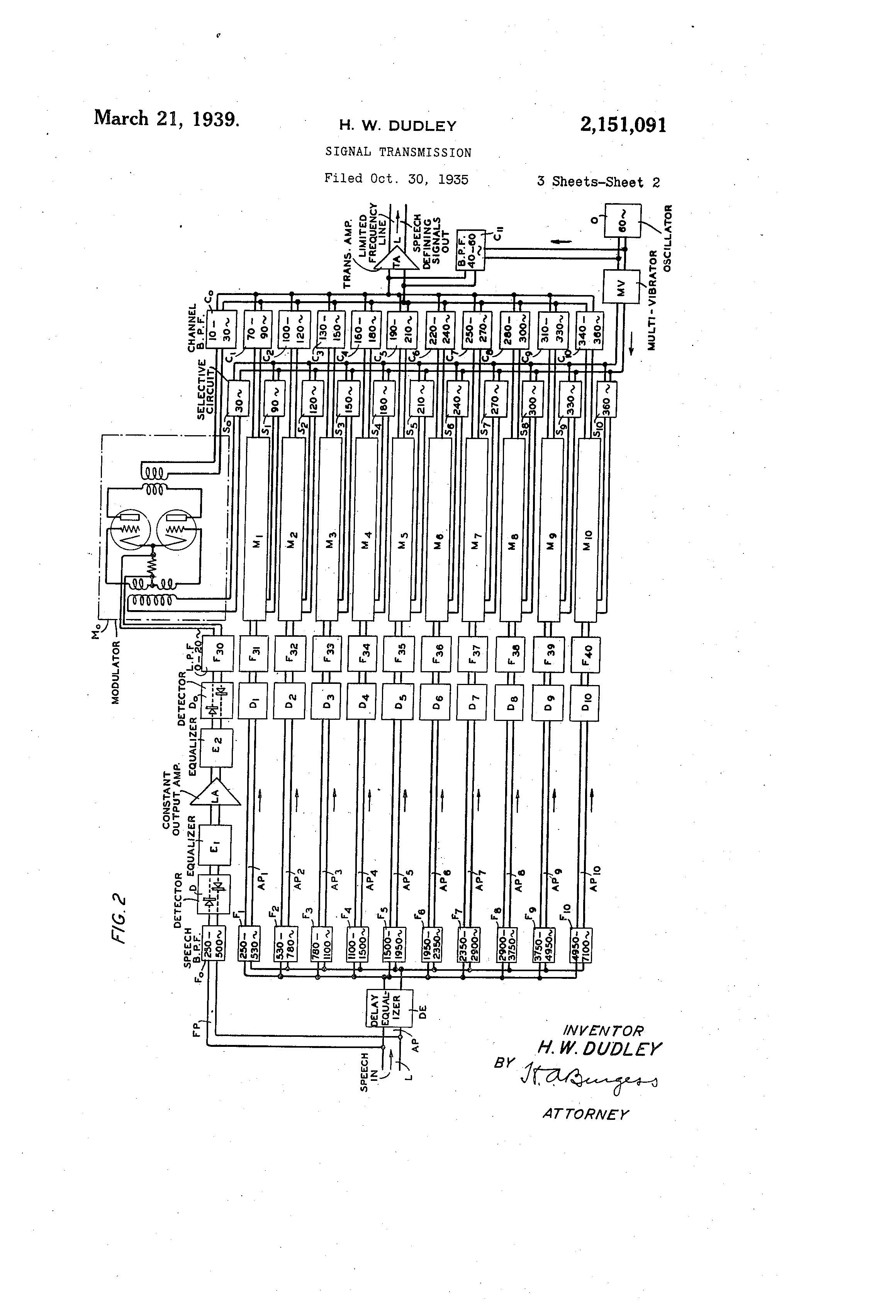
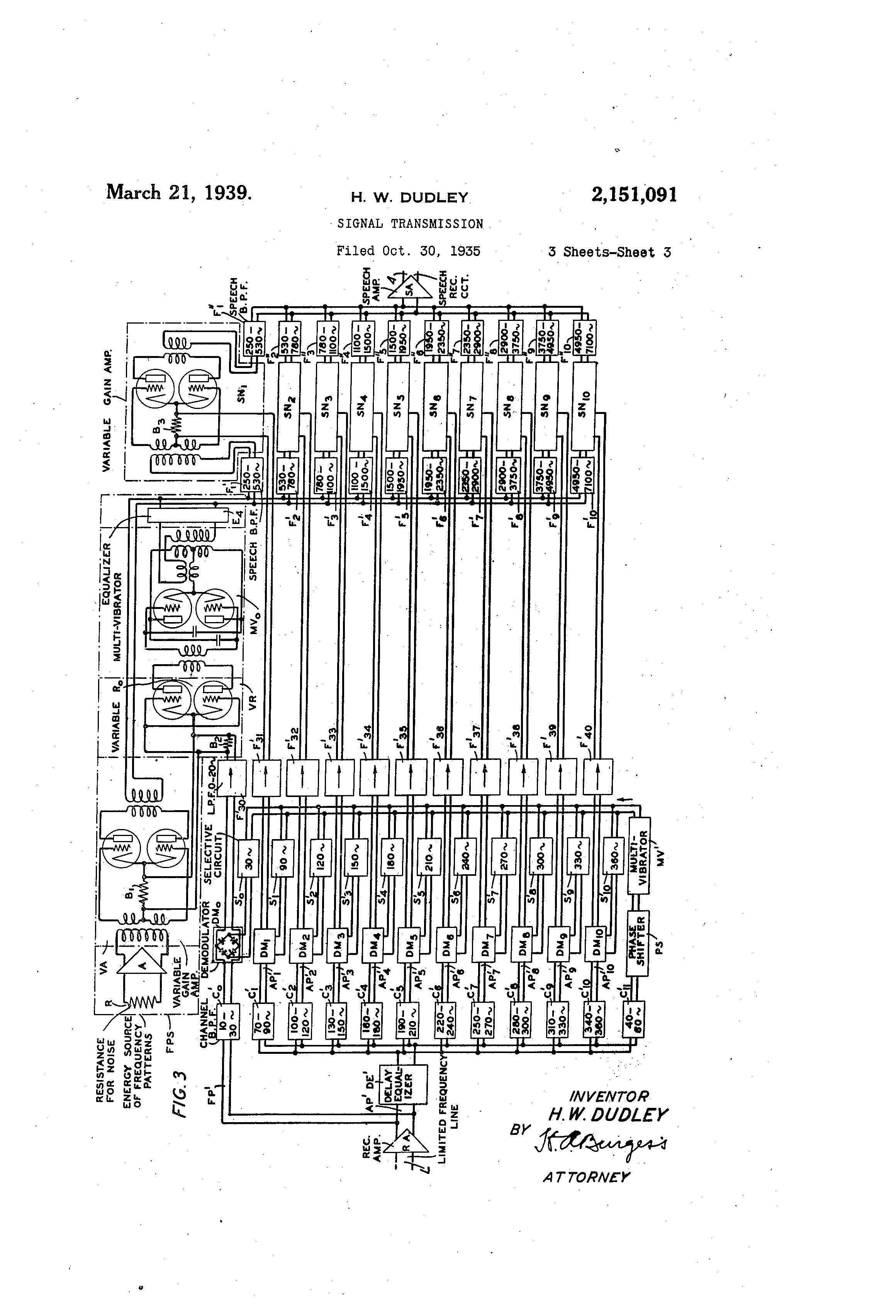
Suiter Swantz IP Team Spotlight: Dallin Call
At Suiter Swantz IP we take great pride in providing our clients with the highest level of intellectual property representation and we recognize this would not be possible without our elite team of patent attorneys and staff. Each month we will feature one of our team members and give you the opportunity to learn more about their experiences and background. This month it is our pleasure to introduce Dallin B. Call.
Dallin joined Suiter Swantz IP in 2012. After graduating from the University of Utah, where he received a B.S. in chemical engineering, Dallin obtained his Juris Doctor from Creighton University School of Law. Prior to joining Suiter Swantz, Dallin practiced intellectual property and commercial transactions law in the pharmaceutical industry.
How did you get into patent law?
During law school I interned at UNeMed and clerked at Suiter Swantz IP, gaining a valuable perspective on intellectual property and patent law. These experiences, together with my natural curiosity, led me to pursue a career in patent law.
What do you like most about working at Suiter Swantz?
The thing I like best about working at Suiter Swantz is the satisfaction that comes with overcoming a new challenge on a daily basis. One thing that makes Suiter Swantz unique is the distinct array of backgrounds and interests of the staff and attorneys who work here.
What is one of the biggest challenges you’ve faced professionally?
One of the biggest challenges I’ve faced professionally…I’m not sure, ask me tomorrow. Every day is its own challenge in this field.
Where did you grow up?
I grew up in picturesque Moab, Utah with my large family (I am 1 of 12). I enjoyed the hikes and scenery and still go back to visit when I am able.
If you could spend the day with someone famous (living or dead) who would it be?
If I could spend a day with someone famous, it would likely be Thomas Edison.
What is your favorite book/song?
My favorite book is a youth fiction novel, The Summer of the Monkeys; my favorite movie The Hunt for Red October (Sean Connery and Alec Baldwin); my favorite song is probably Home (Phillip Phillips).
As a child what did you want to be when you grew up?
When I was young, I remember telling my parents that I wanted to become a few different things at different stages in my life, including attorney and inventor. I find now I’m very fortunate because I get to do work in both areas.
What do you like to do outside the office?
Outside the office, I enjoy spending time with my family; I play basketball and help out with a youth group and a Boy Scout troop in Papillion.
Patent of the Day: Milking Stool
Suiter Swantz IP takes a look back at past inventions and inventors with our Patent Of The Day.
On this day in 1906, Merrill T. Hamilton was granted U.S. Patent No. 815,425 for a MILKING STOOL.
This invention relates to milking-stools and has for its object to provide the same, with improved means for supporting a pail thereon in position to receive the milk and to enable the convenient release of the pail without necessitating the removal of fastening devices. In this connection it is proposed to make use of the weight of the operator for actuating the pail-holding devices and thereby to immediately release the pail when the operator rises from the seat
A still further object of the invention is to enable the convenient shifting of the pail from side to side without releasing the same from the stool and to enable the operator to use his knees for shifting the pail the usual manner.
Suiter Swantz IP is a full-service intellectual property law firm serving all of Nebraska, Iowa and South Dakota. If you have any intellectual property questions or need assistance with any patent, trademark or copyright matters and would like to speak to one of our patent attorneys please feel free to contact us.
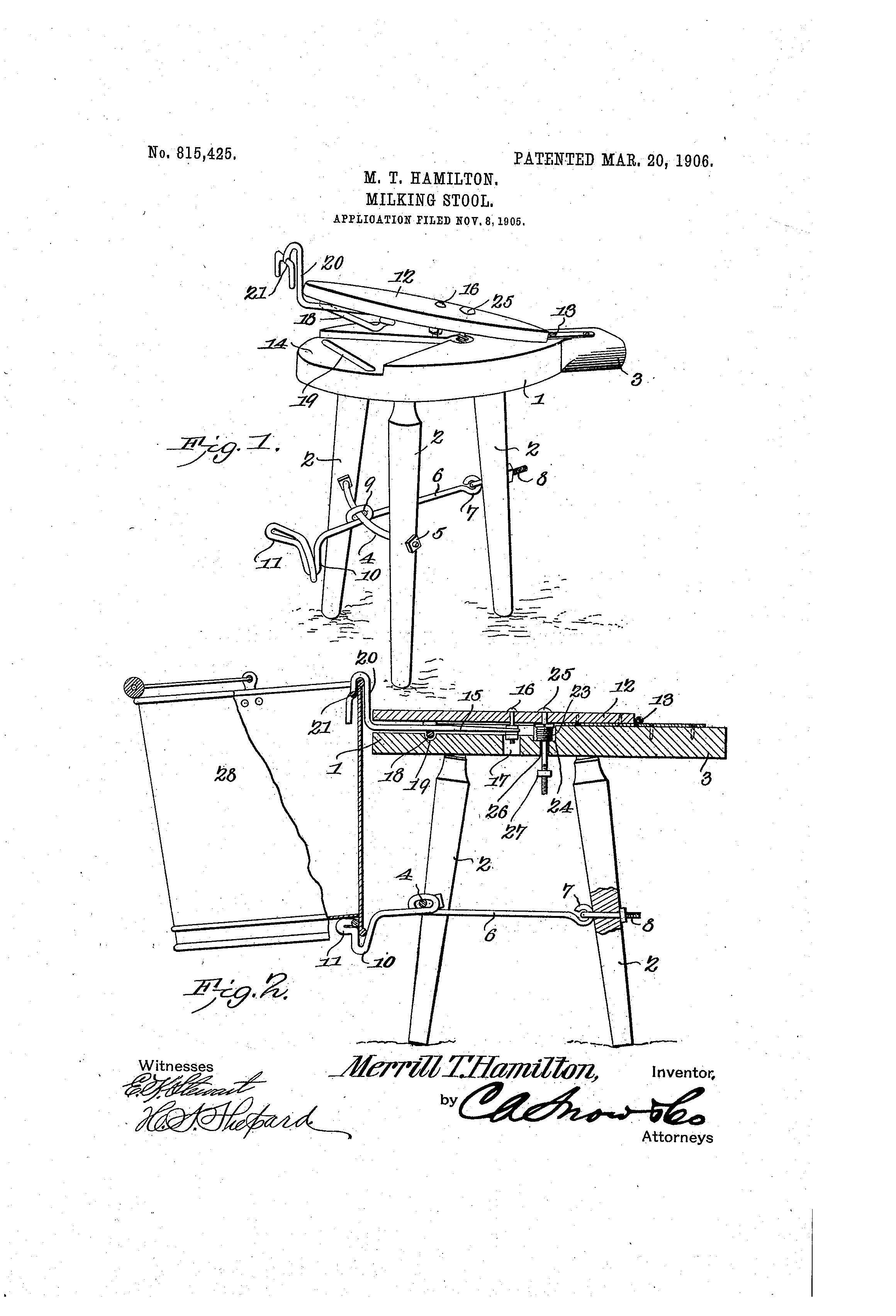
St. Patrick's Day Patent of the Day: Eyeglasses with Clover
Suiter Swantz IP takes a look back at past inventions and inventors with our Patent Of The Day.
On this day in 1993, Craig T. Jones and David M. Vaughan were granted U.S. Patent No. D335,678 for a EYEGLASSES WITH CLOVER.
These festive glasses have shamrocks over the top of each lens. Many will be seen wearing these glasses on St. Patrick's Day.
Suiter Swantz IP is a full-service intellectual property law firm serving all of Nebraska, Iowa and South Dakota. If you have any intellectual property questions or need assistance with any patent, trademark or copyright matters and would like to speak to one of our patent attorneys please feel free to contact us.
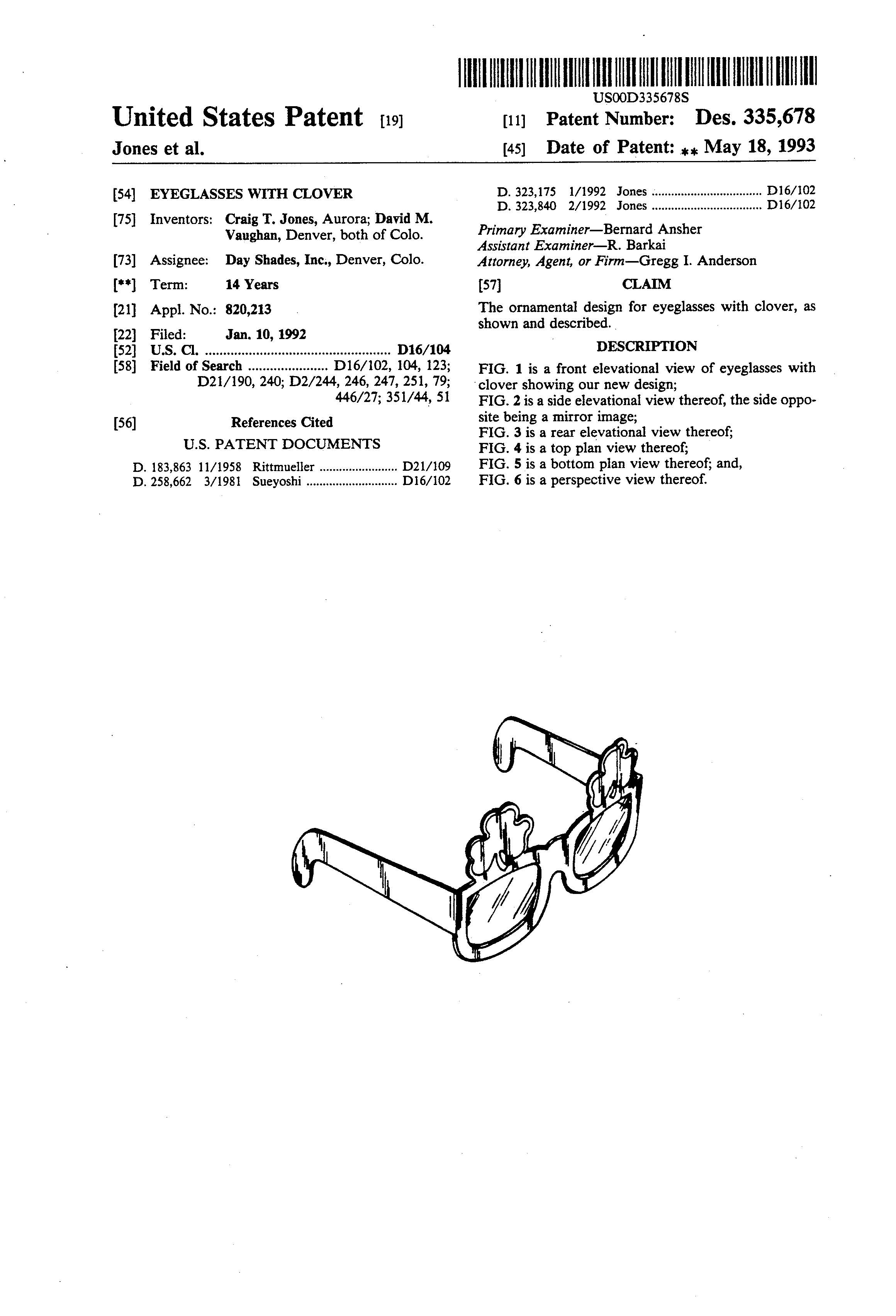

Patent of the Day: Ice Cream Freezer
Suiter Swantz IP takes a look back at past inventions and inventors with our Patent Of The Day.
On this day in 1909, John C. Miller was granted U.S. Patent No. 915,689 for a ICE CREAM FREEZER.
This invention relates to improved mechanism for making ice cream for similar purposes. It has for its object to use a liquid cooling medium such as brine, and to provide a circulation for the said cooling medium about the liquid to be frozen which will cause rapid and even freezing of the same.
Suiter Swantz IP is a full-service intellectual property law firm serving all of Nebraska, Iowa and South Dakota. If you have any intellectual property questions or need assistance with any patent, trademark or copyright matters and would like to speak to one of our patent attorneys please feel free to contact us.
